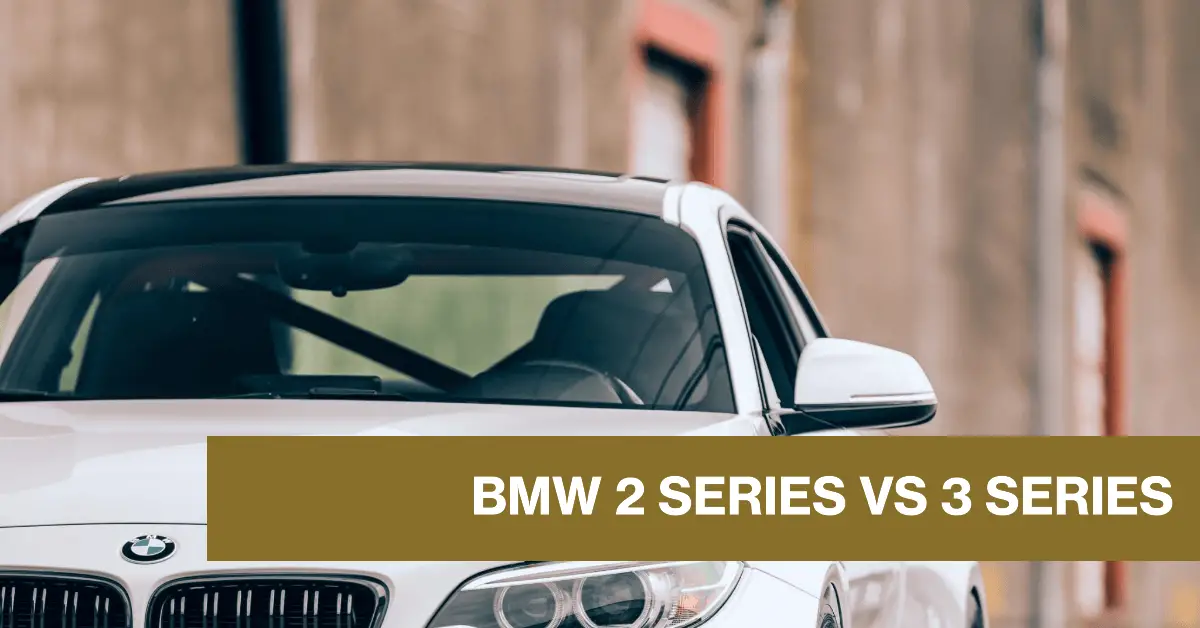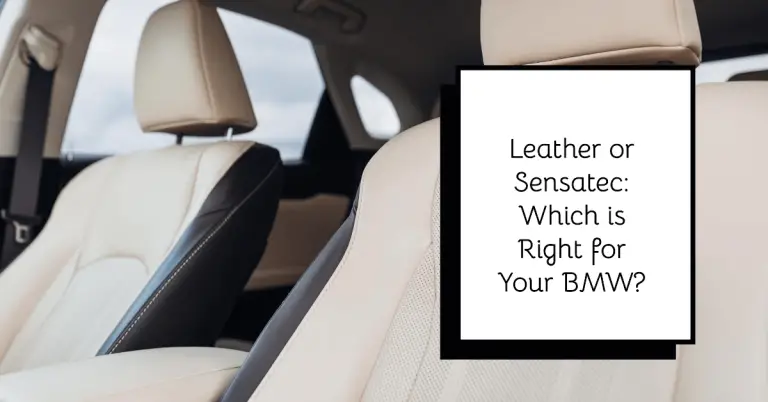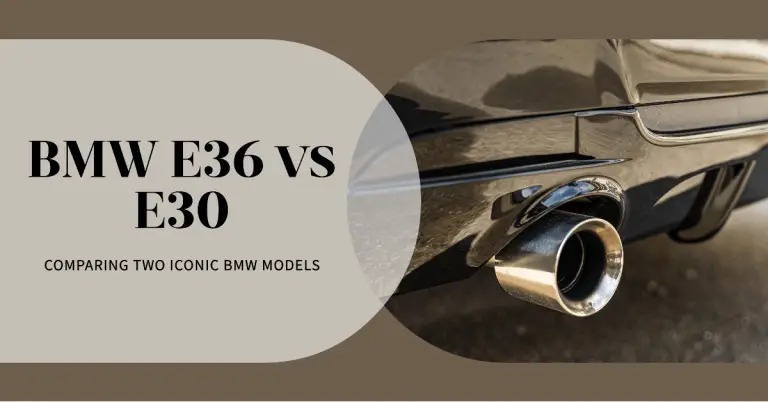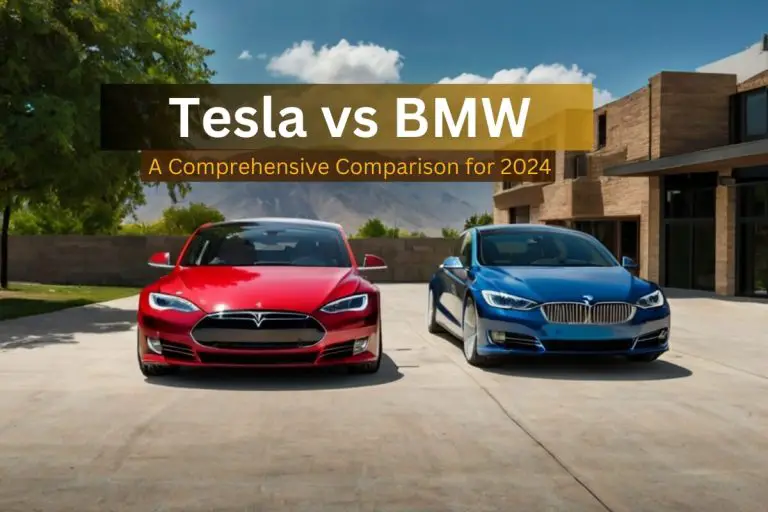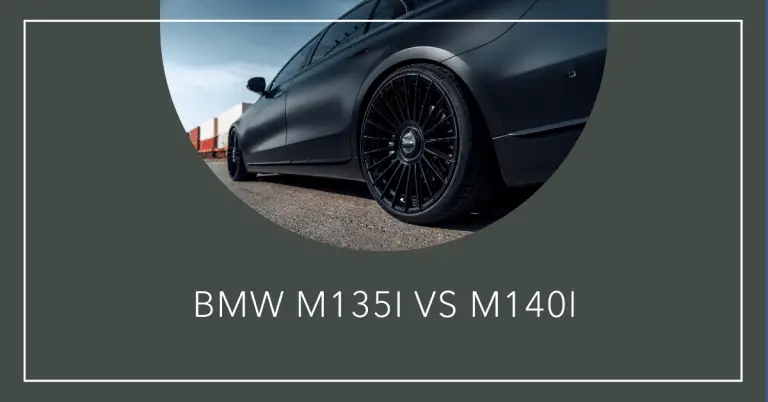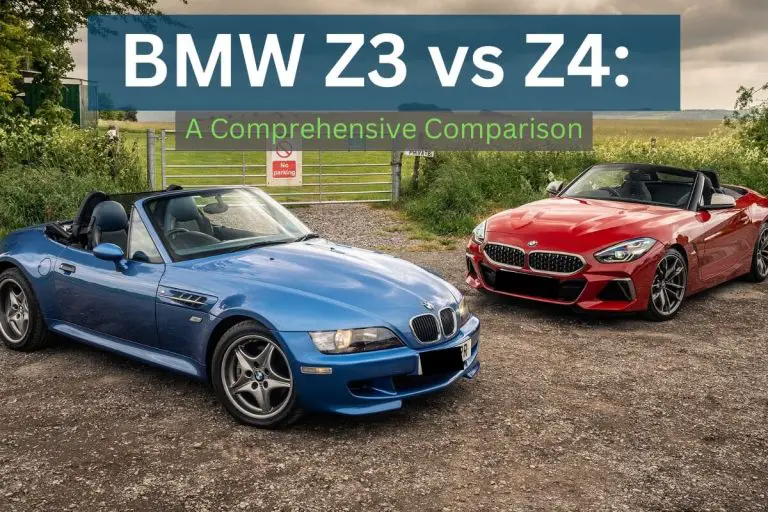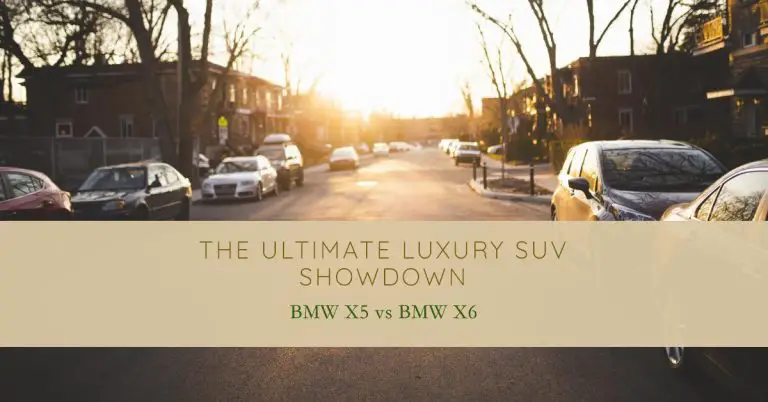BMW 2 Series vs 3 Series: Which Model is Right For You?
If you’re in the market for a compact luxury vehicle, two of BMW’s most popular models are the sporty 2 Series and the practical 3 Series. Both provide excellent performance and handling that BMW is known for, but in different packages. So should you go with the zippy 2 Series coupe or more spacious 3 Series sedan?
This comprehensive comparison will look at the key differences between the BMW 2 Series and 3 Series over 9 categories. We’ll cover pricing, performance, exterior styling, interior space, technology features, fuel economy, safety ratings, driving experience, and resale value.
After reading this head-to-head guide, you’ll know whether the 2 Series or 3 Series is the better choice for your needs and budget. Time to decide whether you want two doors or four!
Pricing – 2 Series is More Affordable Upfront
When it comes to base pricing, the BMW 2 Series definitely has a value advantage. The rear-wheel drive 230i coupe starts at an MSRP of $35,900 versus the 320i sedan at $41,250. Even comparing all-wheel drive models, the 2 Series xDrive coupe rings in lower at $38,600 versus the 3 Series xDrive at $43,250.
Across equivalent trim lines like the M240i and M340i, the 2 Series maintains a pricing edge of around $5,000-$8,000 over the 3 Series depending on options. Going for a more luxurious model like the M2 CS will amplify the pricing difference even further.
Pros of the less expensive 2 Series:
- Better entry-level pricing makes the 2 Series accessible to more buyers
- Requires less cash upfront for purchasers who want a lower monthly payment
- Provides strong performance and luxury at a more affordable price point
Cons of the lower cost 2 Series:
- Less premium materials used in some areas to reach lower price point
- Not as many tech features and options available as the 3 Series
- Smaller vehicle size and lack of rear doors traded off to reduce cost
The more expensive 3 Series does offer advantages for its bump up in base pricing:
Pros of the 3 Series pricing:
- Higher quality interior materials and build quality
- Additional luxury and technology features even on base models
- Larger vehicle with 4 doors provides greater practicality
Cons of the higher 3 Series pricing:
- Puts the 3 Series out of reach for some buyers on a limited budget
- Monthly loan payments will be higher
- Paying more doesn’t guarantee higher resale value down the road
Ultimately the 2 Series provides strong BMW performance and luxury at a lower price, while the 3 Series offers greater refinement, space, and features for the premium it commands. Which you prefer comes down to budget and priorities.
Performance – 2 Series is More Agile, 3 Series More Refined
When it comes to driving performance, the 2 Series excels with its agile handling while the 3 Series offers more comfort and daily drivability.
The 2 Series is powered by turbocharged 4-cylinder and 6-cylinder engines providing between 228-369 horsepower depending on configuration. Transmissions are an 8-speed automatic or a six-speed manual. The smaller 2 Series dimensions, near perfect 50/50 weight distribution, and short overhangs make the coupe feel nimble and eager to change direction. Steering is ultra-precise and suspension is tuned for athletic handling over cushy cruising. This all adds up to an engaging drive on curvy roads.
By comparison, the 3 Series engines produce between 184-382 horsepower paired with an 8-speed automatic or 6-speed manual depending on trim. While still responsive, the 3 Series has softer suspension calibrations and more sound insulation for a quieter, more relaxed ride. The steering and handling still communicate the road well but won’t rattle your fillings over bumps like the tauter 2 Series. This provides a blend of capable performance with greater refinement more suited to long highway trips or daily commutes.
2 Series handling advantages:
- Quicker turn-in with more agile steering
- Excellent cornering grip and traction
- Lower center of gravity for controlled body motions
- Minimal suspension lean through tight turns
- Communicates road feel for a visceral experience
3 Series ride benefits:
- More compliant suspension soaks up road imperfections
- Reduced noise and vibrations provide comfort
- Heavier steering feel adds stability at higher speeds
- All around balance of sporty yet refined
The right choice comes down to your driving priorities. The nimble 2 Series is engineered for driving purists and winding backroads. The 3 Series maintains BMW’s DNA while becoming a bit softer and more well-rounded for real world use.
Exterior Styling – 2 Series is Sportier, 3 Series More Classic
The exterior dimensions and designs of the 2 Series and 3 Series reflect their differing performance characteristics.
The 2 Series has proportions like a traditional coupe, with sweptback lines, a tapered roofline, short overhangs and big wheels pushed to the corners. The aggressive front fascia, flared fenders and wide stance emphasize its eagerness for action. It looks athletic even when standing still.
In contrast, the 3 Series design is more conservative and formal. The recognizable kidney grille, rectilinear headlights and restrained character lines provide an upscale but less dramatic visual. The sedan roofline and rear are more vertical and practical. The leaner fenders and smaller wheels lend a refined style.
2 Series exterior highlights:
- Dramatic coupe silhouette with tapered roof
- Pronounced wheel arches and muscular fenders
- Big air intakes and chin spoiler look aggressive
- Quad exhausts integrated into rear bumper
- Stance emphasizes rear-drive balance
3 Series exterior styling notes:
- Familiar kidneys grille and twin headlights
- Shorter hood and more upright windshield
- Subtly flared fenders and smaller wheels
- Chrome bits add upscale touches
- Overall more generic sedan shape
The bold 2 Series turns heads with its coupe flair while the 3 Series goes for a tasteful, timeless BMW theme. Which aesthetic you prefer depends on whether you want drama or discretion.
Interior Space – 3 Series Has More Passenger and Cargo Room
Being a two-door coupe, the 2 Series unsurprisingly provides less interior room than the four-door 3 Series. The differences really show up when it comes to backseat space and cargo capacity.
In the front seats, headroom, legroom and shoulder room are similar. But the 3 Series has a 2 inch advantage in rear legroom at 35.2 inches versus the 2 Series at 33.0 inches. Rear headroom is also tighter in the 2 Series at just 36.5 inches due to its swooping roofline.
The coupe’s cramped backseat and small door openings also make it harder to get in and out of the rear seats or install child safety seats. Overall the 2 Series works better as a 2 passenger vehicle.
For hauling gear, the 3 Series offers significantly more cargo space. It provides 17 cubic feet of trunk volume versus just 13.8 in the 2 Series. The 3 Series sedan also has a center pass through and split folding rear seats allowing you to carry longer items.
2 Series interior space cons:
- Tight rear legroom and headroom
- Difficult access to backseat
- Small trunk opening with less cubic feet
3 Series interior space pros:
- Adult-friendly rear legroom
- Easier access through 4 full doors
- Larger trunk capacity with pass through
- 40/20/40 split folding rear seats standard
So while the 2 Series cockpit can comfortably accommodate two adults upfront, the 3 Series is the better choice if you need real backseat room for passengers or car seats, or want maximum cargo flexibility.
Tech Features – 3 Series Offers More Options and Upgrades
Being a more premium model, the 3 Series offers additional technology and luxury options over the 2 Series – albeit for a higher MSRP.
Both cars come well equipped with leatherette seats, power front seats, dual climate control, proximity entry, rain sensing wipers, a sunroof, LED headlights and the iDrive infotainment system as standard.
But the pricier 3 Series adds more upscale options like leather seats, navigation, wireless charging, multi-contour seats, head-up display, lumbar support, parking assist and gesture control. You can also upgrade to luxury packages with premium sound and amenities. Active driving aids are more robust in the 3 Series line.
Some key tech feature differences:
- Navigation: standard on 3 Series, optional on 2 Series
- Heads up display: optional on 3 Series, not available on 2 Series
- Digital instrument cluster: optional on 3 Series, not offered on 2 Series
- Gesture control: optional on 3 Series, absent on 2 Series
- Wireless charging: optional on 3 Series, absent on 2 Series
- Surround view camera: optional on 3 Series, absent on 2 Series
- Parking Assistant Plus: optional on 3 Series, absent on 2 Series
While both BMW models come well equipped, the pricier 3 Series offers more ways to elevate the luxury and tech factor if desired. But you pay extra for those upgrades.
Fuel Economy – Similar MPG for 4-Cylinder Models
When comparing four cylinder models, fuel economy is close between the 2 Series and 3 Series. For the 230i coupe and 320i sedan with rear-wheel drive and automatic transmission:
- 2 Series 230i: 26 mpg city / 36 mpg highway
- 3 Series 320i: 26 mpg city / 36 mpg highway
So for base four cylinder models, the mileage difference is negligible. Selecting all-wheel drive slashes highway mpg by 3-4 mpg for both cars.
However, when opting for 6-cylinder engines fuel economy favors the 3 Series slightly:
- 2 Series M240i xDrive: 21 mpg city / 31 mpg highway
- 3 Series M340i xDrive: 22 mpg city / 30 mpg highway
In real world driving, owners of 4-cylinder models report similar combined mpg in the high 20s to low 30s. The 3 Series 6-cylinder does seem to have a slight real-world mpg edge over the 2 Series equivalent.
2 Series gas mileage pros:
- Lower weight coupe body aids efficiency
- Similar mpg to 320i in city and highway cycles
3 Series fuel economy benefits:
- Minimally higher MPG with 6-cylinder engine
- Start/stop technology standard for increased efficiency
For those wanting the best gas mileage, the four cylinder 2 Series and 3 Series are close. Overall mpg wins should not sway choosing one over the other. Their efficiency differences are minor.
Safety Ratings – Both Excellent, but 3 Series Edges Ahead
Safety is a priority for BMW across all model lines, but the 3 Series does score marginally better in third party crash testing.
In IIHS testing, both vehicles earn the top Good rating in all crashworthiness categories – front, side, roof strength and head restraints. Both earn Superior or Advanced scores for front crash prevention when equipped with automatic emergency braking.
However, the 3 Series gets slightly better headlight ratings, earning Acceptable versus Marginal for the 2 Series.
In NHTSA testing:
- The 2 Series earns 5/5 stars for overall crash protection.
- The 3 Series gets perfect 5/5 stars for overall protection too, but achieves 5 stars versus 4 stars for frontal impact.
The two BMWs offer similar standard safety features like airbags, stability control and tire pressure monitoring. But advanced active systems like blind spot monitoring, lane keeping assist and parking sensors are more widely available in 3 Series trims.
2 Series safety pros:
- Top Good IIHS scores across the board
- 5 star overall rating from NHTSA testing
- Available driver assistance features like AEB
3 Series safety advantages:
- Slightly better headlight rating from IIHS
- Perfect 5 stars from NHTSA for frontal crashes
- More advanced driver aids available in more trims
While both score very well, the 3 Series’ edge in headlights, frontal crash performance, and advanced driver assistance availability make it the safer pick overall. But both BMWs still deliver excellent protection.
Driving Experience – 2 Series More Thrilling, 3 Series More Refined
Much like their difference in performance focus, the 2 Series and 3 Series offer different driving experiences.
Reviewers praise the 2 Series for providing an intense, connected driving experience. The sport-tuned suspension, responsive engine and quick steering make it eager to tackle curves and exciting to push hard. It feels light and nimble. The firm ride communicates road feel for a visceral experience. It’s truly a driver’s car. Just expect a noisy, bumpy ride around town.
By contrast, the 3 Series offers a more relaxed, upscale driving experience. It’s still agile but with greater composure and compliance. There’s more noise insulation for a quieter cabin environment. While not as immediately fun as the 2 Series, the 3 Series has a beautiful balance of smooth power delivery, capable handling, and comfort. It excels as an all-around daily driver.
2 Series driving experience highlights:
- Extremely quick, communicative steering
- Accelerates with urgency when pressed
- Taut suspension prioritizes handling over comfort
- Raw and responsive, tuned for backroad bliss
- Sporty exhaust note adds to driver engagement
3 Series driving characteristics:
- Refined power delivery around town
- Comfort-oriented suspension smooths out bumps
- Heavier steering provides stability
- Quieter interior for road trip comfort
- Well-judged balance of sporty yet luxurious
The choice comes down to whether you prioritize excitement and thrills or a refined real-world experience. The 2 Series is engineered to delight driving enthusiasts while the 3 Series adds comfort for daily usability.
Resale Value – 3 Series Holds Value Better Long Term
Over a long ownership period, the 3 Series tends to hold its value better compared to the 2 Series.
According to Kelley Blue Book, the 3 Series enjoys resale values around 5% higher overall. After 5 years of ownership, you can expect the 3 Series to retain around 47% of its original MSRP versus 43% for the 2 Series. The gap widens further by year 10.
The same trend appears looking at Edmunds projections. The 3 Series has a clear resale value advantage of several percentage points over the 2 Series at both the 5 year and 10 year ownership marks.
Some reasons for the better 3 Series resale value:
- Sedans often have wider appeal than coupes
- The 3 Series dominates the compact luxury segment with strong demand
- Greater brand cachet and desirability from being a classic BMW
- Owners likely to maintain car well and service at BMW dealers
While the upfront cost is higher, the boosted resale value can offset some of that over time. The total long term value favors the 3 Series once depreciation is considered.
Conclusion: 2 Series or 3 Series – Which is Best?
The sportier BMW 2 Series and more practical 3 Series each have their merits. The 2 Series excels with agile handling and lively performance for less upfront cost. But the 3 Series offers greater comfort, passenger and cargo room, technology features, and safety ratings.
Weigh your priorities for performance, luxury, tech, and budget to decide if the zippy 2 Series coupe or refined 3 Series sedan is the better match. For those wanting comfort with four doors and maximum flexibility, the 3 Series prevails. But drivers desiring a fun-to-drive coupe should go 2 Series.
Whichever you pick, both BWW models deliver legendary driving enjoyment. Now that you know the key 2 Series and 3 Series differences, you can confidently decide whether you want two doors or four on your next Ultimate Driving Machine.

